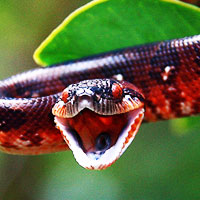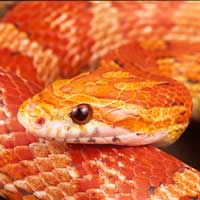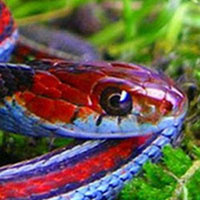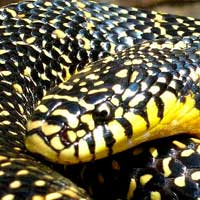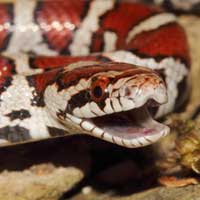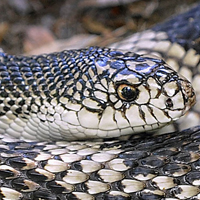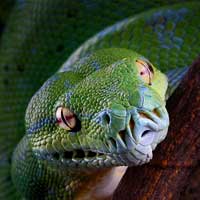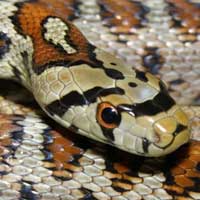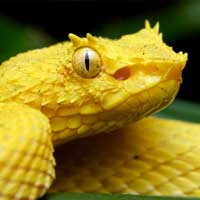Scarlet Kingsnake: Everything You Need to Know About This Stunning Reptile
The scientific name of the Scarlet Kingsnake is Lampropeltis elapsoides. It belongs to the Colubridae family, which includes many non-venomous snake species known for their adaptability and varied habitats..
Scientific Name: Lampropeltis elapsoides
Snake Family: Colubridae
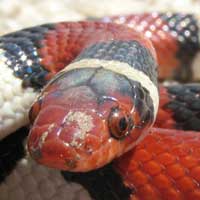
Introduction to the Scarlet Kingsnake
The Scarlet Kingsnake (Lampropeltis elapsoides) is a vibrant, non-venomous snake native to the southeastern United States. Known for its bright red, black, and yellow bands, it is often mistaken for the venomous coral snake. This fascinating species is a small, secretive predator that plays an essential role in controlling pest populations in its ecosystem.
Where Does the Scarlet Kingsnake Live?
The Scarlet Kingsnake is highly adaptable, thriving in a variety of habitats across its range. Its ability to camouflage and burrow makes it well-suited for diverse environments.
Preferred Habitat Features:
- Forested areas with sandy soils
- Woodlands and pine forests
- Scrublands and grasslands
- Suburban areas with adequate cover
| Region | Habitat Type | Key Features |
|---|---|---|
| Southeastern USA | Woodlands | Shaded, sandy soils |
| Coastal Plains | Pine forests | Dense vegetation, dry terrain |
| Florida | Scrublands | Open areas, ample prey |
What Does the Scarlet Kingsnake Eat?
The Scarlet Kingsnake is a carnivorous predator that consumes a variety of small prey. Its diet reflects its opportunistic hunting behavior and nocturnal habits.
Common Diet:
- Lizards and skinks
- Frogs and small amphibians
- Rodents such as mice
- Small snakes
In captivity, feeding frozen-thawed rodents is the safest and most convenient option. Juveniles should be fed every 5-7 days, while adults require feeding every 10-14 days. Proper prey size is crucial to prevent health issues.
Behavior and Temperament of the Scarlet Kingsnake
The Scarlet Kingsnake is known for its shy and secretive nature. While it may be less active during the day, it exhibits interesting behaviors that make it a favorite among reptile enthusiasts.
Key Behavioral Traits:
- Non-aggressive and docile
- Primarily nocturnal and active at night
- Skilled burrower and climber
- Mimics coral snakes to deter predators
With consistent handling, the Scarlet Kingsnake can adapt to captivity and become more accustomed to human interaction, though it may remain somewhat reserved.
Health and Lifespan of the Scarlet Kingsnake
The Scarlet Kingsnake is a hardy species with a lifespan of 10-15 years in captivity when properly cared for. Regular monitoring of its health and environment is essential.
Common Health Concerns:
- Respiratory infections from improper humidity
- Shedding issues due to low humidity
- Parasites, particularly in wild-caught specimens
Maintain a temperature gradient of 75-85°F, provide clean water for hydration, and ensure a well-ventilated enclosure to prevent health problems. Regular check-ups with a reptile veterinarian are also recommended.
Reproductive Traits of the Scarlet Kingsnake
The Scarlet Kingsnake is oviparous, laying eggs after mating. Breeding typically occurs in the spring, with females laying eggs in early summer.
Reproductive Details:
- Mating season: Spring
- Clutch size: 3-8 eggs
- Incubation period: 45-70 days
- Hatchlings are independent at birth
In captivity, providing a suitable nesting box and maintaining proper incubation temperatures (80-85°F) are critical for successful breeding and hatching.
How to Handle and Care for the Scarlet Kingsnake
Caring for the Scarlet Kingsnake involves replicating its natural habitat and handling it gently to reduce stress.
Handling and Care Tips:
- Handle regularly but gently to build trust
- Provide an enclosure with hiding spots and climbing branches
- Maintain appropriate humidity and temperature levels
- Offer a varied diet of appropriately sized prey
With proper care, the Scarlet Kingsnake can thrive in captivity, offering years of fascination and enjoyment to its keeper.
